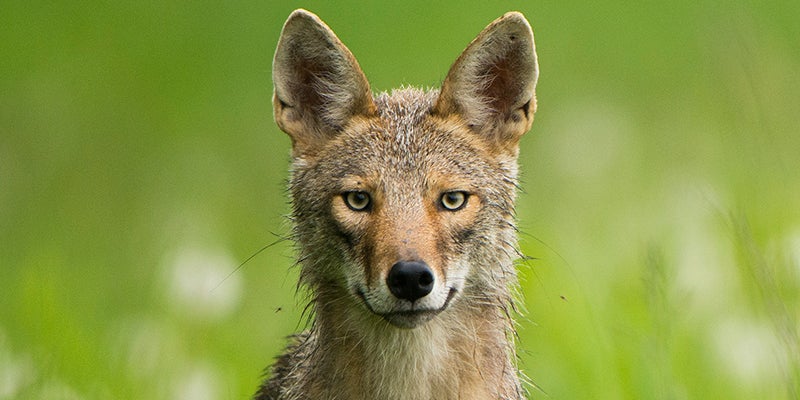Nature Notes: The wiley coyote
Published 6:13 pm Tuesday, January 31, 2023

- Photo by John Duren
|
Getting your Trinity Audio player ready...
|
By Kelly Bahl
Outreach Naturalist
February is prime time to listen for your neighborhood family of coyotes. But their vocalizations are no cause for alarm.
Coyotes are often seen as pests and nuisances with their wiley and cunning tendencies. They get a bad rap for going after livestock, pets, or local fauna. But in reality this canine is highly adaptable and has flourished with the boom of the human species, so are they really all bad?
Wolves, foxes, coyotes, and dogs are all in the same biological family of Canidea. And wolves and coyotes are even closer related belonging to the same genus of canis. So why do wolves get a better PR than coyotes do? They both hunt the same prey and have similar impacts on their ecosystems.
As the human population started to expand and have a need for more land for towns, farms, and everything in between coyotes seemed to thrive while wolves were seen more as a threat. That threat triggered an overhunting while people tried to eradicate the wolves for the safety of their livestock and families. Meanwhile, as humans swept through the land in the late 1800s with a trail of deforestation in their wake, coyotes got to expand their range and thrive.
In more recent history, however, wolves have gotten a rebranding and seen as an elusive and majestic beast that once roamed these lands that can now only be found in “wilder” places while coyotes are the local nuisance. But even if they are a pest to us humans, coyotes have really stepped up to help fill the role of predator in a lot of ecosystems that have relied on other larger predators that have been extirpated like wolves and mountain lions.
In February the coyotes will start their search for a mate to have pups. They mate for life and search for a partner via a series of calls, yips, and howls. Because these canines are so vocal and have over 10 different kinds of calls a lot of people overestimate how many coyotes they hear in the distance. What sounds like 10 or more coyotes might only be two or three. They will become noisy when in search for a mate, defending their territory, or a recent meal.
Coyotes usually live in family groups but do their hunting alone for most of their prey. If the prey is something bigger, like a dear, they have no problems teaming up. They are capable of running up to 43 miles per hour making them one of the fastest animals in North America. Their agility is helpful when on the hunt as well as their keen sight and hearing.
Being the highly adaptable animals that they are coyotes are very opportunistic. If a hunt is unsuccessful coyotes can be omnivores so eat a huge variety of things, whether its fresh meat from a kill, meat from a dead animal that has been sitting for weeks (called carrion), insects, plants, fruits, and veggies.
Although the rapport of these canines trend more towards the negative, they are a huge help in local pest control. A singular coyote can eat over 1,800 rodents a year. Talk about easy pest control. Coyotes are a driving factor in keeping a lot of smaller mammal populations in check, which in turn improves biodiversity in our local ecosystems (which is always a good thing). Hopefully this small article can help you grow your appreciation for this highly underrated local.
February at the Nature Center
Feb. 4: Family Cross-Country Ski Lessons, 8:30-10:30 a.m.
Feb. 8: Live Bird Program, 4 p.m.
Feb. 11: Adult Cross-Country Ski Lesson 8:30-10:30 a.m.
Feb. 18: Candle-Lit Free Ski, 5:30-8:30 p.m.
Feb. 20: Interpretive Center Closed
Feb. 20: American Red Cross Blood Drive, noon to 6 p.m., Ruby Rupner Auditorium



